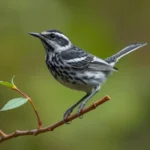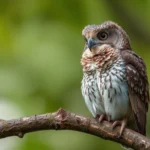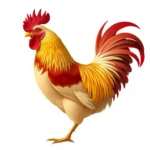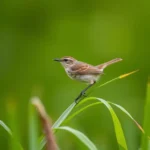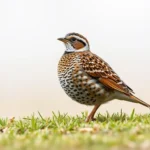The Baya Weaver: Symbolism, Spirituality, and Modern Interpretations
Disclaimer: Some images on this website are AI-generated artworks and may not accurately represent real animals.
The Baya Weaver is not just a bird; it embodies a rich tapestry of symbolism and meaning that resonates with many cultures and ecological systems. This article explores the multifaceted significance of the Baya Weaver, delving into its physical characteristics, habitat, behaviors, and its profound symbolism in spirituality and modern interpretations.
Understanding the Baya Weaver
Overview of the Baya Weaver
The Baya Weaver (Ploceus philippinus) is a small, colorful bird known for its intricate nesting techniques and vibrant plumage. Below is a table summarizing its physical characteristics:
| Feature | Description |
|---|---|
| Size | Approximately 15-20 cm |
| Color | Male: Bright yellow and black; Female: Olive-brown |
| Beak | Conical, strong for seed cracking |
| Wings | Short and pointed |
| Tail | Short, with a slight fork |
The Baya Weaver is predominantly found in the wetlands and grasslands of South Asia, including countries like India, Bangladesh, and parts of Southeast Asia. They thrive in habitats with tall grasses and reeds, which provide ample nesting material and protection from predators.
Habitat and Distribution
Baya Weavers prefer to inhabit areas near water bodies, such as rivers, lakes, and rice fields. Their presence is often a sign of a healthy ecosystem, as they play an integral role in seed dispersal and controlling insect populations. The adaptability of the Baya Weaver allows it to thrive in various environments, from urban parks to rural farmlands.
Behavior and Nesting Habits
One of the most remarkable aspects of the Baya Weaver is its nesting behavior. Males are known for their elaborate nest-building skills, creating pendulous nests that can hang from tree branches or tall grasses. This intricate nesting process serves not only as a breeding ground but also as a display of creativity and strength.
The male Baya Weaver gathers grass, leaves, and other materials, weaving them meticulously to create a sturdy yet delicate structure. This behavior represents a blend of creativity and craftsmanship, showcasing the bird’s resourcefulness and ingenuity.
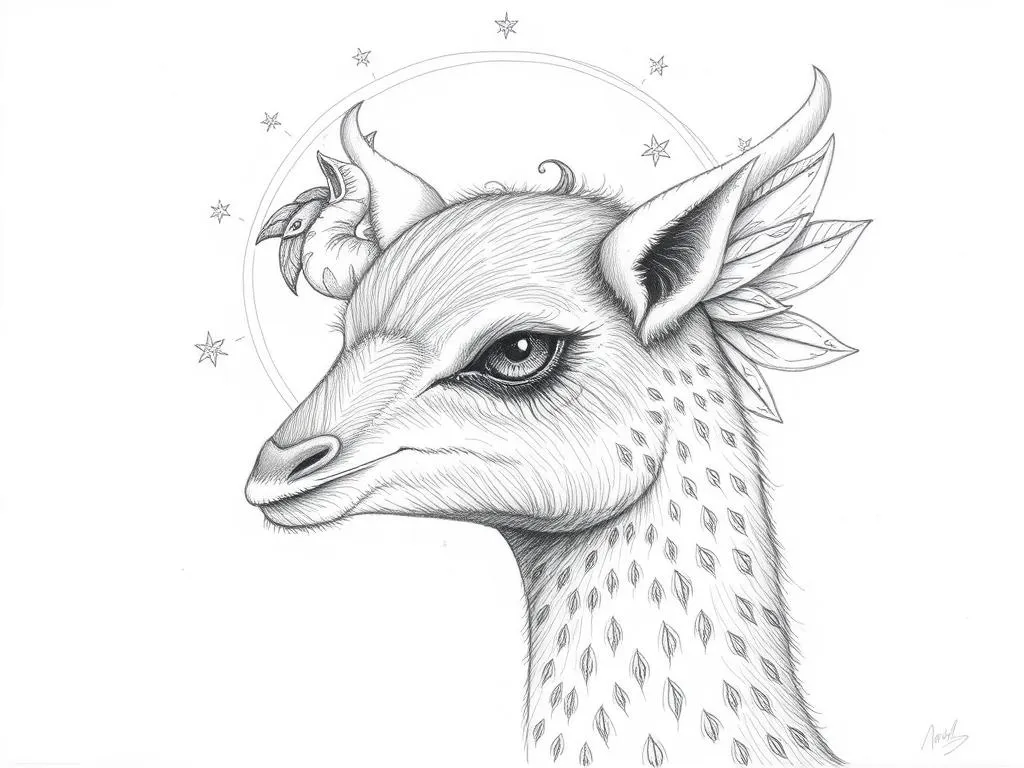
Cultural Significance
Role in Local Ecosystems
In local ecosystems, the Baya Weaver plays a crucial role as a seed disperser. By feeding on various seeds, they contribute to plant propagation and biodiversity. Their nests also provide shelter for other species, enhancing the ecological balance in their habitats.
Importance in Various Cultures and Folklore
The Baya Weaver holds a significant place in many cultures, often symbolizing prosperity and happiness. In some Indian communities, the Baya Weaver is associated with the arrival of the monsoon season, a time of renewal and fertility. Folklore often portrays the Baya Weaver as a diligent worker, embodying the values of hard work and dedication.
Symbolism & Spiritual Meaning
Creativity and Craftsmanship
Nest-building by the Baya Weaver can be seen as a powerful metaphor for creativity and craftsmanship. Just as the bird carefully constructs its nest, individuals are encouraged to create and shape their destinies. The Baya Weaver’s resourcefulness inspires people to utilize available resources optimally, fostering innovation and creativity in their lives.
Community and Social Bonds
Baya Weavers are social birds, often seen in flocks, which emphasizes the importance of community and social bonds. Their cooperative nesting habits promote collaboration, reflecting the idea that working together can lead to greater achievements. This symbolism resonates deeply with those who value teamwork and collective effort.
Transformation and Change
The seasonal changes that affect the Baya Weaver’s life cycle symbolize transformation and change. As the seasons shift, so too do the challenges and opportunities faced by these birds. This cyclical nature of life serves as a reminder of the inevitability of change and the importance of adapting to new circumstances.
Baya Weaver in Dreams
Interpretation of Baya Weaver Dreams
Dreams featuring the Baya Weaver can carry profound meanings. Below is a table that outlines various interpretations associated with dreaming about this bird:
| Symbol in Dreams | Meaning |
|---|---|
| Flight | Represents freedom and liberation |
| Nest | Symbolizes home, safety, and comfort |
| Gathering | Reflects social connections and community |
| Bright colors | Indicates joy, happiness, and positive energy |
In dreams, the act of flight often signifies freedom and the ability to rise above challenges. The presence of the Baya Weaver can encourage dreamers to pursue their passions and break free from constraints.
Messages of Hope and New Beginnings
The Baya Weaver also embodies messages of hope and new beginnings. Dreams featuring this bird may reflect personal growth and aspirations. Just as the Baya Weaver builds its nest for new life, individuals can interpret their dreams as signs of upcoming opportunities and fresh starts.
The connection to aspirations and goals is vital, as it encourages dreamers to remain optimistic and focused on their journeys. The Baya Weaver serves as a beacon of hope, reminding us of the beauty of potential and the possibilities that lie ahead.
Modern Interpretations
Baya Weaver in Art and Literature
The imagery of the Baya Weaver has transcended its natural habitat, finding representation in various art forms and literature. Artists often depict the bird’s vibrant colors and intricate nests as symbols of creativity and beauty. In literature, the Baya Weaver’s story is woven into narratives that emphasize themes of community, resilience, and the delicate balance of nature.
Symbolic Use in Literature and Storytelling
Writers frequently use the Baya Weaver as a symbol to explore deeper meanings, such as the importance of relationships and the interconnectedness of life. The bird’s ability to thrive in diverse environments often serves as a metaphor for adaptability and perseverance, resonating with readers on personal and collective levels.
Conservation Efforts
Current Threats to Baya Weaver Populations
Despite its resilience, the Baya Weaver faces several threats, including habitat destruction, climate change, and human encroachment. Urbanization has led to the loss of wetlands and grasslands, which are crucial for the bird’s survival. Conservation efforts are essential to ensure that these beautiful birds continue to thrive in their natural environments.
Importance of Conservation and Awareness
Raising awareness about the Baya Weaver and its habitat is crucial for its conservation. Educational programs and community involvement can help foster a sense of responsibility toward preserving these birds and their ecosystems. By understanding the ecological significance of the Baya Weaver, individuals can contribute to the protection of this remarkable species.
Key Takeaways
- The Baya Weaver symbolizes creativity, craftsmanship, community, and transformation.
- Its nesting behavior represents resourcefulness and the importance of collaboration.
- Dreams featuring the Baya Weaver can carry messages of hope, freedom, and personal growth.
- The Baya Weaver holds a significant place in culture, folklore, and modern art.
- Conservation efforts are vital for preserving the Baya Weaver’s habitat and ensuring its survival.
Conclusion
The Baya Weaver is a bird rich in symbolism and spirituality, embodying themes of creativity, community, and transformation. As we explore its significance, we are reminded of the intricate connections between nature and our lives. By understanding the role of the Baya Weaver in our ecosystems and cultures, we can foster a deeper appreciation for this unique bird.
We invite readers to reflect on their experiences or dreams related to the Baya Weaver. What does this bird symbolize for you? Through our collective understanding and appreciation, we can ensure that the Baya Weaver continues to thrive, inspiring future generations with its beauty and meaning.
